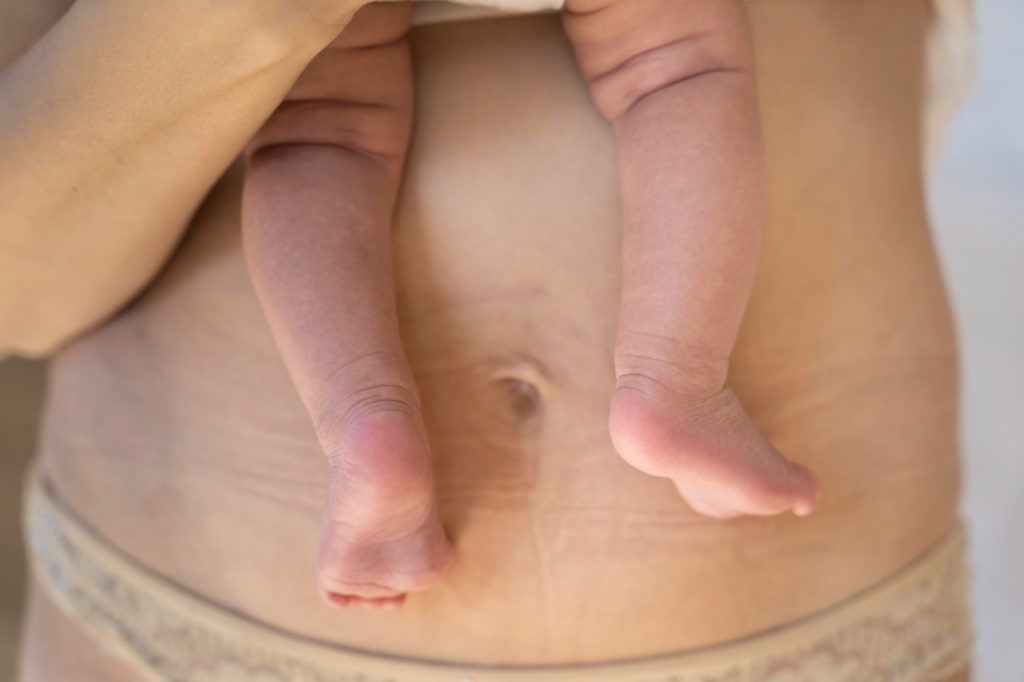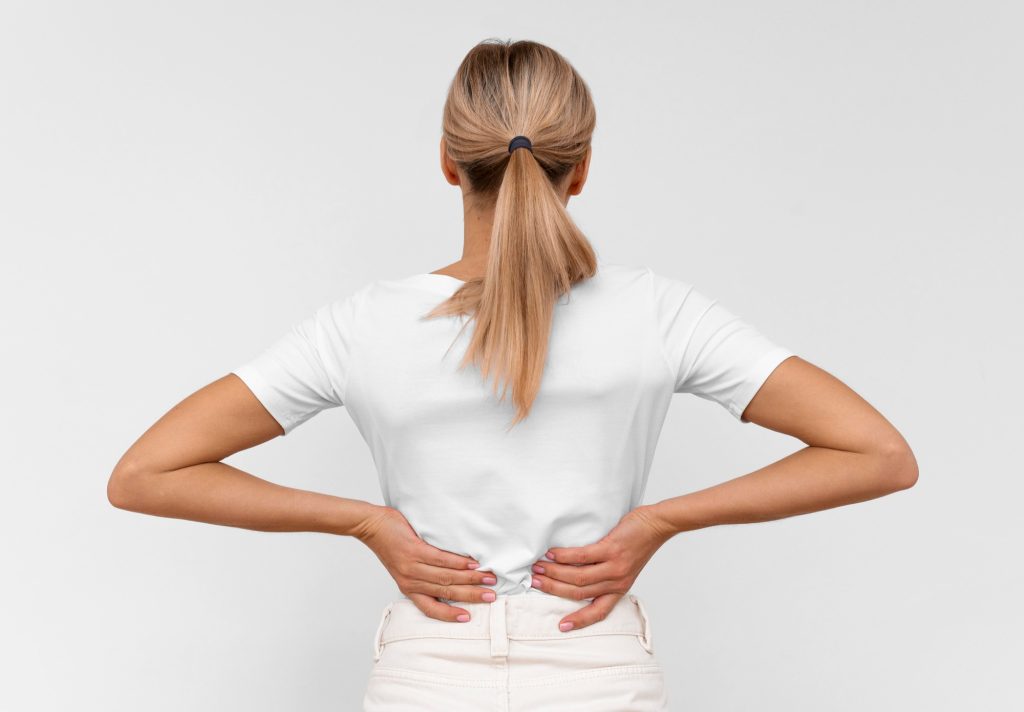Discover how the position of your baby, whether anterior or posterior, can affect your experience of back pain during pregnancy.
How Does Anterior or Posterior Position of the Baby Impact Back Pain?
Ah, the joys and wonders of pregnancy! Along with the excitement of anticipating a new life, there can also be some not-so-exciting side effects. One common complaint is back pain. But did you know that the position of your baby can actually impact how much back pain you experience? Let’s dive in and explore the fascinating world of the anterior and posterior positions of the baby and their impact on back pain.

Understanding Anterior and Posterior Baby Positions
Before we get into the nitty-gritty, let’s make sure we’re all on the same page. What exactly do we mean by anterior and posterior baby positions? Well, it’s all about the way your little bundle of joy decides to snuggle up inside your belly.
During pregnancy, the position of the baby in the womb can vary. Some babies prefer to face their mother’s back, while others choose to face her belly. These positions are known as anterior and posterior baby positions, respectively.
Defining Anterior Baby Position
In the anterior position, your baby is facing your back, with their back facing forward. It’s like they’re giving you a personal massage with every little kick. How considerate!
When your baby is in the anterior position, their head is usually down and tucked into your pelvis. This is the ideal position for a vaginal delivery, as it allows the baby’s head to engage in the birth canal and navigate through the pelvis more easily.
During labor, you may feel your baby’s movements more prominently in the front of your belly. This is because their limbs are closer to the surface, making their kicks and punches more noticeable.
Defining Posterior Baby Position
On the other hand, or should we say, the other side of your belly, we have the posterior position. In this case, your baby is facing your belly, with their back pressing against your spine. It’s like they’re saying, “Hey, mom, let me give you a big ol’ hug from the inside!” How sweet!
When your baby is in the posterior position, their head is facing up towards your belly button instead of down towards your pelvis. This position can sometimes make labor more challenging, as the baby’s head may not engage in the birth canal as easily.
During labor, you may experience more back pain and discomfort if your baby is in the posterior position. This is because their back is pressing against your spine, causing added pressure and tension in your lower back.
It’s important to note that babies can change positions throughout pregnancy and even during labor. So, if your baby is currently in the posterior position, there’s still a chance they may rotate to the anterior position before it’s time to give birth.
Understanding the position of your baby can help you prepare for labor and make informed decisions about your birthing plan. If you have any concerns about your baby’s position, don’t hesitate to discuss them with your healthcare provider.
The Anatomy of Pregnancy and Back Pain
Now that we have the baby positions sorted out, let’s take a closer look at why back pain and pregnancy go hand in hand. It all starts with your spine, that marvelous structure supporting your body.
Did you know that the spine is made up of 33 individual bones called vertebrae? These vertebrae are stacked on top of each other, forming a flexible and protective column. The spine not only provides support for the body but also allows for movement and protects the delicate spinal cord.
The Spine and Pregnancy
During pregnancy, your spine takes on some serious changes. As your belly grows and your center of gravity shifts, your spine has to work extra hard to keep everything aligned. It’s like playing a game of Jenga, but instead of wooden blocks, it’s your body!
As your baby bump expands, the weight distribution in your body changes, putting additional stress on your spine. The lumbar region, or the lower part of the spine, is particularly affected. This increased pressure can lead to discomfort and pain in the lower back.
Furthermore, the curvature of the spine may also change during pregnancy. The natural inward curve of the lower back, known as the lordotic curve, can become more pronounced as the abdomen protrudes. This change in curvature can contribute to back pain and postural imbalances.
The Role of Hormones in Pregnancy Back Pain
But it’s not just your spine doing all the heavy lifting. Those delightful pregnancy hormones also play a role in your back pain experience. Hormones like relaxin loosen your ligaments to prepare your body for labor and delivery. However, this can also make your spine more prone to misalignments and discomfort. Thanks, hormones!
Relaxin, produced by the ovaries and placenta, helps to relax the ligaments in the pelvic area, allowing for the expansion of the pelvis during childbirth. Unfortunately, this hormone doesn’t discriminate and affects the ligaments throughout the body, including those supporting the spine. The increased laxity of these ligaments can lead to instability and contribute to back pain.
Additionally, other hormones such as progesterone can also impact the muscles and ligaments surrounding the spine. Progesterone, which increases during pregnancy, relaxes smooth muscles, including those in the back. This relaxation can lead to decreased muscle support and potentially exacerbate back pain.
It’s important to note that while these changes in the spine and hormones are common during pregnancy, not all women experience significant back pain. Factors such as pre-existing conditions, weight gain, and overall physical fitness can influence the severity of back pain during pregnancy.
Anterior Position and Its Impact on Back Pain
Now, let’s get down to the specifics. What happens when your baby decides to cozy up in the anterior position?
When your baby is in the anterior position, their head is typically nestled down into your pelvis. This can put added pressure on your lower back and sacrum, causing discomfort that can range from mild to, well, let’s just say it’s not a walk in the park.
But why does this happen? Let’s delve a little deeper into the physical changes that occur when your baby assumes the anterior position.
As your baby’s head presses against your pelvis, the weight distribution in your body shifts. This can cause your lower back muscles to work harder to maintain balance and support your growing belly. The increased pressure on your sacrum, the triangular bone at the base of your spine, can lead to discomfort and pain.
Not only does the anterior position affect your lower back, but it can also impact your pelvis. The pressure from your baby’s head can compress the nerves and blood vessels in the pelvic region, leading to pelvic pain. Additionally, the position of the baby’s head can sometimes put pressure on the sciatic nerve, resulting in the dreaded sciatica – that delightful shooting pain down your leg.
Now, you might be wondering how to manage this discomfort. Fear not! There are ways to alleviate the back pain associated with the anterior position.
Gentle stretches can help relieve tension in your lower back and provide some much-needed relief. Prenatal yoga, specifically designed for pregnant women, can also be beneficial in strengthening your core muscles and improving flexibility, which can help alleviate back pain.
Another option to consider is getting a good old-fashioned massage from your partner. A gentle massage can help relax your muscles, reduce tension, and provide temporary relief from back pain.
Remember, it’s important to consult with your healthcare provider before starting any new exercise routine or receiving a massage during pregnancy to ensure it is safe for you and your baby.
Posterior Position and Its Impact on Back Pain
Now, let’s spin our attention to the posterior position. What does it have in store for your back?
The posterior position, also known as the occiput posterior position, occurs when your baby decides to face your belly with their back against your spine. This position can have a significant impact on your back, causing various physical changes and potential back pain issues.
Physical Changes with Posterior Position
When your baby assumes the posterior position, the pressure on your lower back can be quite intense. It’s like your baby is using your spine as a personal trampoline! The weight and movement of your baby in this position can put strain on the muscles and ligaments in your lower back, leading to discomfort and pain.
Additionally, the posterior position can cause your baby’s head to press against your tailbone, resulting in discomfort in that area. This pressure on the tailbone can make sitting or lying down for extended periods challenging and can contribute to overall back pain.
Furthermore, the posterior position can also lead to an ache in your buttocks. The pressure exerted by your baby’s back against your spine can radiate discomfort to the surrounding muscles, including those in your buttocks.
Potential Back Pain Issues with Posterior Position
In the posterior position, you may experience increased lower back pain, discomfort in your tailbone, and a pesky ache in your buttocks. These symptoms can make daily activities, such as walking, sitting, or even sleeping, more challenging and uncomfortable.
However, don’t worry, mama, relief is on the way! There are several strategies and remedies you can try to alleviate the back pain associated with the posterior position. Gentle exercises specifically designed for pregnant women can help strengthen your back muscles and improve flexibility, providing much-needed support to your spine.
Additionally, taking warm baths can help relax your muscles and reduce the discomfort caused by the posterior position. The warm water can soothe the aching muscles in your lower back and buttocks, providing temporary relief.
Another helpful tool is a pregnancy support belt. These belts are designed to provide support to your belly and lower back, reducing the strain on your spine caused by the posterior position. By redistributing the weight of your baby, a pregnancy support belt can help alleviate back pain and improve overall comfort.
Remember, every pregnancy is unique, and what works for one woman may not work for another. It’s essential to consult with your healthcare provider to determine the best course of action for managing back pain associated with the posterior position.

Comparing Back Pain in Anterior and Posterior Positions
Now that we’ve explored the joys of both anterior and posterior positions, let’s do a little comparison, shall we?
Similarities in Back Pain Issues
Both anterior and posterior positions can bring on lower back pain, pelvic pain, and that lovely sciatica. It’s like they’re holding a little back pain symposium in there!
Differences in Back Pain Issues
However, there are some differences to note. With the anterior position, the discomfort may be more focused in your lower back. On the other hand, with the posterior position, you might feel more of that lovely tailbone and buttocks pain. So, pick your poison, or rather, your preferred kind of discomfort!
And there you have it, folks – a journey through the world of anterior and posterior positions of the baby and their impact on back pain. Remember, every pregnancy is unique, and your experience may differ from others. So, if you ever find yourself feeling like you’re doing a back-breaking circus act, consult with your healthcare provider for personalized advice and support. Happy parenting, and may your back pain be but a distant memory!



